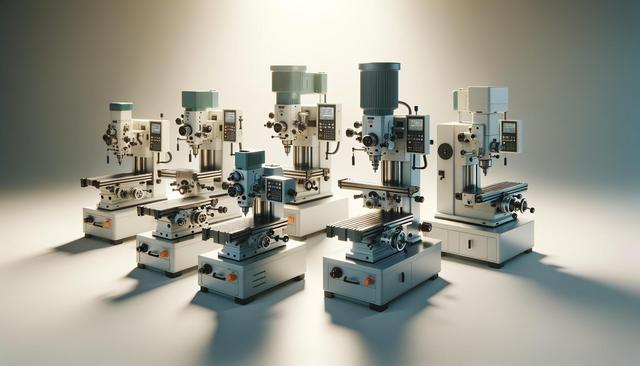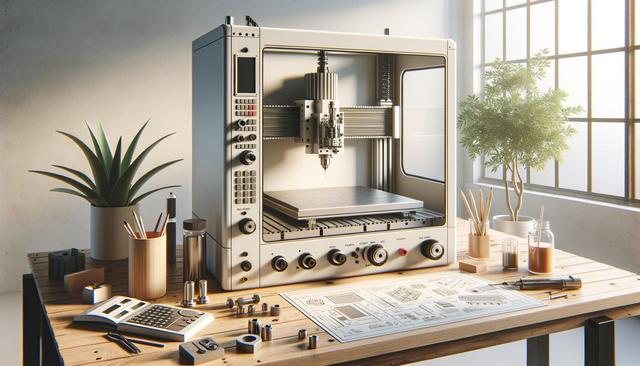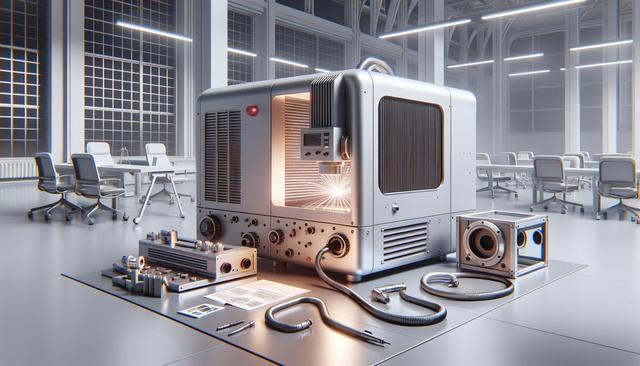Factors That Influence Milling Machine Prices
The price of a milling machine is influenced by a range of variables that determine its capabilities and suitability for different tasks. One of the most significant factors is the size of the machine. Larger machines often come with more powerful motors and larger worktables, enabling them to handle more complex or larger-scale projects. As a result, these machines tend to be priced higher. Another key factor is the type of milling machine—manual, CNC (Computer Numerical Control), or vertical versus horizontal. CNC machines, in particular, are more expensive due to their automation and precision capabilities. Material construction also plays a role; machines made from high-grade components and metals are generally more durable and cost more.
Additional features, such as digital readouts, variable spindle speeds, and advanced safety mechanisms, can also add to the overall cost. Users should assess what features are necessary for their specific applications to avoid overspending. For instance, a hobbyist may not need advanced automation, while a professional workshop may benefit from investing in high-performance equipment.
Price Ranges by Machine Type
Milling machines are available in different types, and each has a typical price range that reflects its functionality and complexity. Below is a general breakdown of the most common types:
- Manual milling machines: Entry-level models can start from a few hundred dollars and go up to several thousand depending on size and precision.
- Vertical milling machines: These are widely used and usually priced between $3,000 and $20,000, depending on configuration and brand.
- Horizontal milling machines: Typically more expensive, ranging from $10,000 to over $50,000 due to their added complexity and use in industrial settings.
- CNC milling machines: These machines offer automation and precision, with prices starting around $5,000 for basic desktop models and exceeding $100,000 for industrial-grade systems.
Understanding these ranges can help buyers set realistic budgets and compare models within their price bracket effectively.
New vs. Used Milling Machines
Another significant consideration when evaluating milling machine prices is whether to buy new or used. New machines come with warranties, the latest technology, and minimal wear, but they are generally more expensive. On the other hand, used machines can offer considerable savings, especially if purchased from a reputable dealer who has refurbished or maintained the equipment well.
However, buying used equipment carries some risks. Potential issues include outdated technology, hidden wear and tear, or a lack of replacement parts. Before purchasing a used machine, it’s wise to:
- Inspect the machine in person or request a detailed condition report.
- Check the availability of parts and support.
- Test the machine if possible to ensure it operates smoothly.
Ultimately, the decision between new and used depends on budget, intended usage, and risk tolerance.
Operational Costs Beyond the Purchase Price
When assessing milling machine prices, it’s important to consider the total cost of ownership, not just the upfront purchase price. Operational costs can add significantly to the long-term expense of owning a milling machine. These include:
- Electricity and power consumption, especially for high-performance or industrial-grade machines.
- Maintenance and repair costs, which can increase with more complex machines.
- Tooling and accessories needed for different machining operations.
- Training for operators, particularly for CNC machines.
Budgeting for these factors ensures that buyers are financially prepared to maintain and operate the machine efficiently over time. Ignoring operational costs can lead to unexpected expenses that may outweigh the initial cost savings of choosing a cheaper machine.
Tips for Making a Smart Purchase
Whether you’re a beginner or an experienced machinist, making a smart purchase involves more than just comparing prices. Start by clearly defining your needs. Are you using the machine for small-scale personal projects or heavy-duty industrial production? Knowing your requirements will help narrow down your choices.
Here are some key tips for selecting a suitable milling machine:
- Research and compare multiple manufacturers and models.
- Read user reviews and seek recommendations from industry professionals.
- Consider long-term support, such as availability of parts and customer service.
- Factor in the total cost of ownership, not just the purchase price.
Taking the time to evaluate your options thoroughly can lead to a more satisfying and cost-effective investment. It also helps ensure you’re not overpaying for features you won’t use or underestimating the capabilities you truly need.
Conclusion: Evaluating Milling Machine Prices Wisely
Understanding the factors that influence milling machine prices helps buyers make informed, cost-effective decisions. With a wide range of models and price points available, it’s essential to assess your specific needs, weigh the pros and cons of new versus used machines, and consider long-term operational costs. A well-informed purchase not only saves money but also contributes to greater productivity and reliability in your machining tasks. Whether you’re setting up a home workshop or upgrading industrial equipment, thoughtful evaluation is key to finding a machine that aligns with both your budget and performance expectations.


